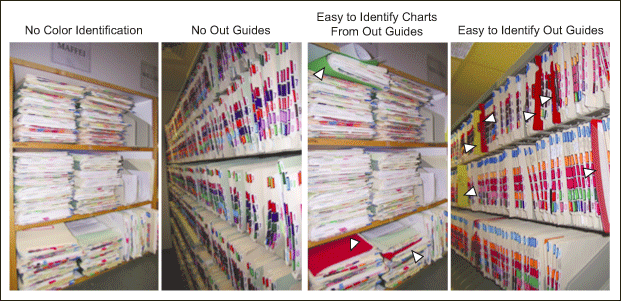
In October 2006, Virtua Health, aided by a team of Black Belts and Lean consultants, completed a Kaizen event at Tatem Brown Family Practice. A Kaizen event is a three-and-a-half day burst of continuous improvement activities where changes are brainstormed, try-stormed, validated and implemented by a small team of process experts (frontline staff) primarily from the focus area. Tatem Brown Family Practice is a combined physician group practice and a university-affiliated residency-training program of Virtua Health. The dual role of the center is to provide comprehensive medical care for the entire family and to educate resident physicians in the specialty of family medicine.
Kaizen Pre-work
Pre-work for the Kaizen included gathering time study data on patient encounters and the back office medical records process to understand process steps, distances traveled and opportunities for improvement. Though the ultimate goal of the practice is to eventually go to an electronic medical record system, there were critical workflow changes that needed to be ironed out prior to implementation.
The pre-work showed that opportunities existed in tracking and retrieving medical records and improving communication between key staff and clinicians regarding the charting process. Data collection gathered by the Virtua IT team revealed that on a typical day, staff spend at least seven hours of time searching across 39 potential locations for missing charts that were not in the file room.
The Kaizen Event
The Kaizen team included clinicians and staff at Tatem Brown, Virtua Black Belts, Lean leaders, two consultants and six Lean workshop participants from various hospitals across the United States. The goal of the Kaizen was to decrease the time spent looking for charts and therefore increase staff satisfaction.
The first activity the team undertook included completing a 5S (sort, set in order, shine, standardize, sustain) of the file room, front desk area and physician and resident mailboxes. This was done to create a condition of visual management so the staff could easily identify a problem and create a point-of-use environment so that things are located where they are used. One physician stated, “This is seven years worth of stuff that was accumulating and would have just stayed there if we had not done this.”
Next, the team split into three sub-teams to brainstorm ideas around decreasing the number of chart locations and creating a process for staff to easily identify chart locations without generating additional work.
The results were outstanding. The team created colored out guides to track charts that were being pulled for physician messages/refills, triage nurses, irregular labs, etc. to decrease the time spent searching for files and enable a tracking process for charts pulled for reasons other than for standard appointments. A pilot is in place and initial time studies show that the time spent looking for a chart decreased on average from six minutes to two minutes when colored out guides were in place.

In addition, the team moved the nurses’ triage station from the library office down the hall from the front desk area to a more convenient location right next to the file room. This decreased non-value-added activities due to travel time by 0.2 miles per day for refill calls (over 100 refills per day) and created a line of sight between the staff and triage nurse, improving communication for response to patient calls. The library was also relocated to the other end of the practice to move it closer to the preceptors and resident workspaces.
The resident chart boxes had been located in the main chart area and in multiple locations, compounding the significant amount of time staff spent looking for charts. An additional computer was put in the new resident mailbox room. This minimized travel for all physicians, made it easier to locate important mail that may have been lost in the chart piles previously, brought charts closer to the point of use and reduced travel distance from 231 feet to 74 feet for each staff member needing to put charts in resident mailboxes for signature or follow up.
Embracing the Change
Any change is difficult to embrace and this was no exception. Although there was a bit of hesitation initially due to the number of potential changes, all of the staff agreed to give the new process a chance. They soon realized the changes would dramatically make their day-to-day work a lot easier and improve their effectiveness.
The Tatem Brown team members spoke with their peers about the changes that would be implemented. In addition, the team hung up flip charts around the practice to solicit feedback from other staff members and created a communication plan to disseminate all of the changes to the staff. The team also developed a plan to sustain these changes and created a project funnel for future work.
Kaizen means continuous incremental improvement, and the team at Virtua has shown their commitment to fostering a Lean culture of continuous improvement.